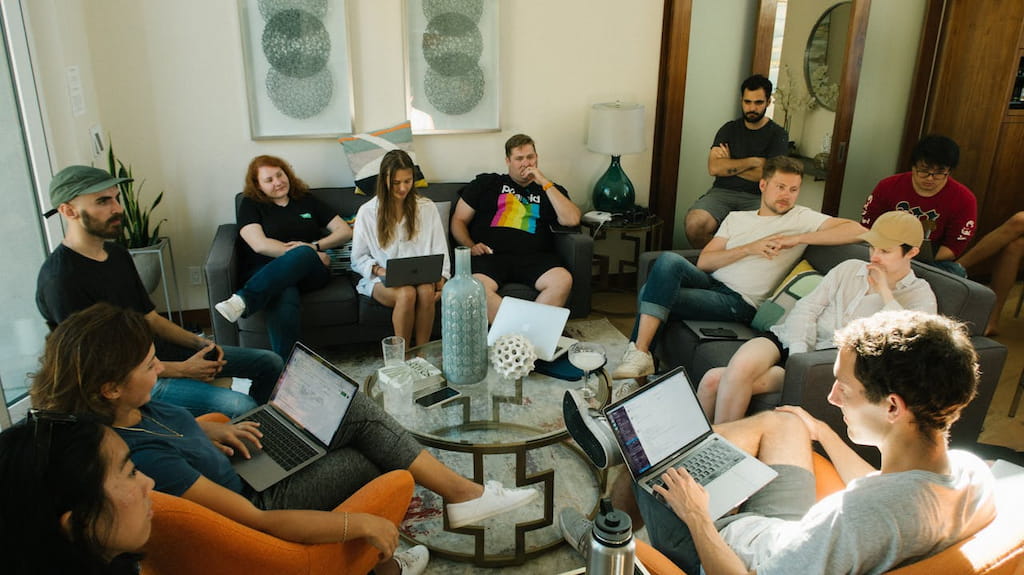Leaders not only drive organizational success but also inspire and motivate their teams to achieve common goals. Coming up with leadership development training ideas is one of the most effective ways to cultivate these essential skills. By participating in various leadership activities—ranging from team-building games for leadership to workshops—leaders can enhance their abilities and create a more cohesive team. This article explores the benefits of leadership activities, provides insights into different management styles, and offers practical implementation strategies to help organizations develop strong, effective leaders. If you are experiencing some team leadership problems, investing time in these activities can yield significant returns for both personal growth and organizational success.
Leadership Activities: Their Benefits and Impact
Leadership activities encompass a range of interactive exercises designed to enhance leadership skills and foster collaboration among participants.
Let’s learn about the specific benefits these activities offer, including examples that cater to different environments, such as leadership activities for college students or situational leadership activities and scenarios.
Key benefits
🗻 Skill enhancement
Leadership activities help individuals develop crucial skills, such as problem-solving and effective communication. For instance, leadership simulation exercises allow participants to engage in real-world scenarios, enhancing their ability to make sound decisions under pressure.
💬 Team building and collaboration
Engaging in team-building for leaders strengthens group dynamics, creating a supportive atmosphere that encourages open dialogue and collaboration. This environment fosters trust, which is essential for effective teamwork.
💁♀️ Real-world application
Through various leadership project examples, participants can apply theoretical knowledge in practical settings. These projects allow individuals to work on community initiatives or organizational challenges, honing their leadership abilities while making a tangible impact.
🤔 Creativity and innovation
Exploring leadership presentation ideas encourages participants to think outside the box and develop unique solutions to challenges. This creative process enhances critical thinking skills, vital for effective leadership.
📶 Networking and connection
Activities also provide opportunities for participants to connect with peers, mentors, and industry leaders, particularly beneficial for college students. Building these networks is essential for career development and future collaboration.
By understanding the multifaceted benefits of leadership activities, organizations, and educational institutions can implement effective strategies to nurture the next generation of leaders.
15 Engaging Leadership Activities
Escape room challenge
Participants are split into small teams, each entering a themed escape room where they need to solve a series of puzzles to “escape” within a time limit. This type of team-building leadership training fosters teamwork, problem-solving, and collaboration under pressure, similar to military leadership exercises where clear communication is key. With time pressure, participants experience real-world leadership challenges like quick decision-making and adaptive problem-solving, fostering skills essential for cohesive leadership and team-building.
Leadership scavenger hunt
In a leadership scavenger hunt, participants hunt for items or complete tasks that symbolize leadership values or skills. This playful setup encourages teamwork, strategizing, and resourcefulness as they work together to locate clues or items. Debriefing sessions afterward reinforce insights gained, making it a fun way to reflect on leadership qualities and collaborative goal-setting.
The marshmallow challenge
Teams must build the tallest structure they can using only spaghetti sticks, tape, and a marshmallow as the topper. This exercise encourages innovation, adaptability, and teamwork, with an emphasis on prototyping and making quick adjustments. By experimenting and learning through trial and error, participants get a hands-on look at leadership as a flexible and iterative process.

Shark tank pitch
Teams develop a product or service idea and then pitch it to a panel of “investors,” simulating a real-world business scenario. This activity improves public speaking, critical thinking, and persuasion skills. Participants learn to identify market needs, think strategically, and present ideas effectively, all essential skills in leadership roles where influencing others is often key. This exercise helps build persuasive and public speaking skills, especially beneficial in classroom leadership activities where communication is emphasized.
Leadership role play
Role-playing various leadership scenarios helps participants explore different leadership styles and responses to challenges. In these guided scenarios, participants see how different approaches impact team dynamics and productivity. By shifting perspectives, they learn to build empathy, understand others’ viewpoints, and adapt their style to various situations—qualities that deepen effective leadership.
Two truths and a lie
In this icebreaker, participants share two true statements and one lie about their past leadership experiences. This simple game promotes self-reflection and relationship building, as team members learn about each other’s backgrounds, strengths, and unique perspectives. By sharing personal stories, participants build trust and openness, which are crucial for strong leadership teams.
Debate tournament
A structured debate lets teams argue for or against leadership-related topics, developing skills in reasoning, communication, and quick thinking. The process of understanding opposing viewpoints fosters respect and empathy—traits that help leaders work well with diverse teams. This activity also helps participants articulate their thoughts clearly and confidently, valuable for public speaking and conflict resolution.

Vision board workshop
Participants create visual boards representing their leadership goals, aspirations, and values. This hands-on activity allows them to think about their future paths and visualize their goals. As a result, participants gain clarity about their objectives and can use their boards as a motivation tool and reminder of their leadership journey.
Peer feedback circles
In small groups, participants provide each other with constructive feedback on their leadership skills and approaches. This activity promotes a culture of open feedback and trust, helping participants recognize areas of improvement and gain insight into how others perceive their actions. It also strengthens skills in giving and receiving feedback, critical for growth as a leader.
Leadership fishbowl
In the fishbowl exercise, a small group discusses a topic while others observe, and afterward, observers provide feedback. This activity sharpens listening and reflective thinking skills, as observers notice subtleties in group dynamics and conversation flow. It’s particularly effective for helping participants understand different communication styles and improve their own discussion skills.

Personality assessments
Using tools like Myers-Briggs or DISC that test personality types, participants explore their own leadership styles and preferences. This introspective approach increases self-awareness, helping participants understand their natural strengths and areas to develop. It also enables team members to recognize each other’s styles, enhancing communication and collaboration through mutual understanding.
Crisis management simulation
Participants tackle a simulated crisis, testing their ability to make decisions and communicate under pressure. This high-stakes activity teaches resilience, critical thinking, and the ability to remain composed in challenging situations, preparing participants for real-world scenarios where quick action and calm leadership are required.
Gratitude journaling
Participants write daily reflections on their leadership journey, focusing on aspects they appreciate or moments they learned from. This reflective practice cultivates gratitude and self-awareness, reinforcing positive thinking and helping leaders recognize the support they receive, a valuable mindset that can strengthen their leadership approach.
Team storytelling
Groups collaboratively build a story by each adding a sentence, which encourages creativity, active listening, and cooperation. This storytelling activity brings diverse perspectives together, helping participants develop an appreciation for different ideas and viewpoints. It’s a fun way to foster unity and collective problem-solving skills.

Speed networking
In this activity, participants have quick, timed conversations with peers, simulating real networking events. This exercise builds comfort in making fast, meaningful connections, an essential skill for leaders. It also improves participants’ ability to establish rapport, communicate effectively, and adapt to various social situations.
These leadership activities not only develop core skills like decision-making, communication, and empathy but also foster a collaborative and growth-oriented environment among participants. To track participation and time management for implementing these activities, consider using a tool like Everhour, which can provide structured insights and optimize planning.
How to Implement Leadership Activities
Implementing effective leadership activities requires careful planning, execution, and follow-up. Here’s a structured approach to ensure these activities are successful and impactful:
🎯 Identify objectives
Clearly define the goals you want to achieve through the leadership activities. Consider skills you want to enhance, such as communication, teamwork, or problem-solving. Setting measurable objectives will help you assess the effectiveness of the activities later.
🔍 Choose the right activities
Select activities that align with your objectives and the participants’ needs. Consider factors such as group size, participants’ ages, and experience levels. For example, team-building exercises might work well for college students, while simulations could be more effective for professionals.
📋 Prepare resources
Gather all necessary materials, tools, and resources ahead of time. Ensure you have all supplies ready for activities like the Escape room challenge or the Marshmallow challenge. If using technology (e.g., for virtual meetings), test the equipment beforehand.
🌱 Create a safe environment
Establish a supportive and inclusive atmosphere. Encourage open communication and respect among participants. Emphasizing psychological safety allows individuals to share ideas and take risks without fear of judgment.
![what is shift work: definition, types, jobs+best tools [2023]](https://blog-cdn.everhour.com/blog/wp-content/uploads/2022/11/office-good-1.gif)
👥 Facilitate effectively
As a facilitator, guide the activities and keep participants engaged. Encourage collaboration and ensure everyone has the opportunity to contribute. Be prepared to adapt your approach based on the group’s dynamics and feedback.
💬 Debrief after activities
Conduct a debriefing session after each activity. Discuss what participants learned, how they can apply these insights in real-world scenarios, and any challenges they faced. This reflection reinforces learning and helps solidify the experience.
📝 Gather feedback
Collect feedback from participants to understand their experiences and perceptions. Use surveys or open discussions to gather insights on what worked well and what could be improved. This feedback is crucial for refining future activities.
🔗 Follow up
Encourage participants to apply what they’ve learned in their daily roles. Provide resources for continued development and set up follow-up sessions to revisit the objectives. This ongoing support helps reinforce the lessons and maintain momentum.
📊 Monitor progress
Regularly evaluate the long-term impact of the activities on participants’ leadership skills. Use performance metrics, performance appraisals, self-assessments, and peer reviews to gauge progress. Adjust your approach based on these evaluations to ensure continuous improvement.
🏆 Celebrate achievements
Recognize and celebrate the accomplishments of participants. This not only boosts morale but also reinforces the importance of the skills they’ve developed. Consider awards, certificates, or shout-outs in team meetings to acknowledge individual and group efforts.

By implementing these steps, you can create engaging and meaningful leadership activities that foster growth and development among participants. These strategies promote effective learning and teamwork, essential for cultivating future leaders.
Conclusion: Implementing Effective Leadership Activities
Incorporating fun leadership team-building activities into your development programs is essential for nurturing effective leaders. By choosing the right activities, facilitating effectively, and encouraging ongoing reflection, you can significantly enhance the leadership capabilities of your team.
For those looking to streamline their project management and time-tracking processes during these activities, tools like Everhour can be incredibly beneficial. A powerful time tracker, Everhour helps teams track their time, manage tasks, and analyze project performance, ensuring that every leadership activity is not only impactful but also efficient. By leveraging such tools, you can create a seamless experience that supports your leadership development goals.
If you are managing a team of 5 or more and looking to boost efficiency, Everhour is the perfect project cost tracking software to keep your team on track. With seamless time tracking, you can easily estimate task durations, set clear budgets, and generate detailed reports inside Asana, Trello, Jira, or any other pm tool. It is also a great time tracking tool for universities and colleges if that’s what you’re looking for!

